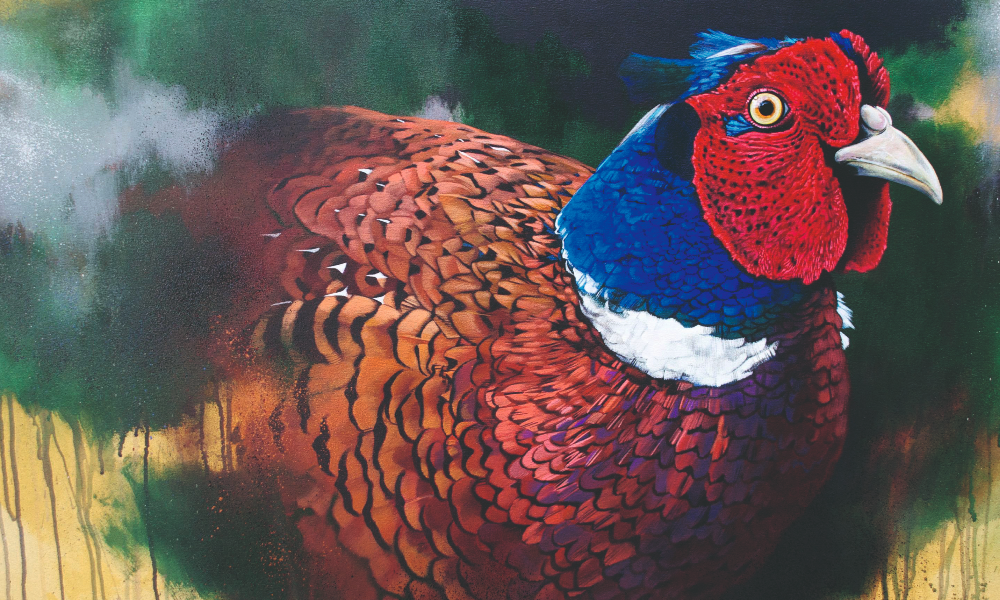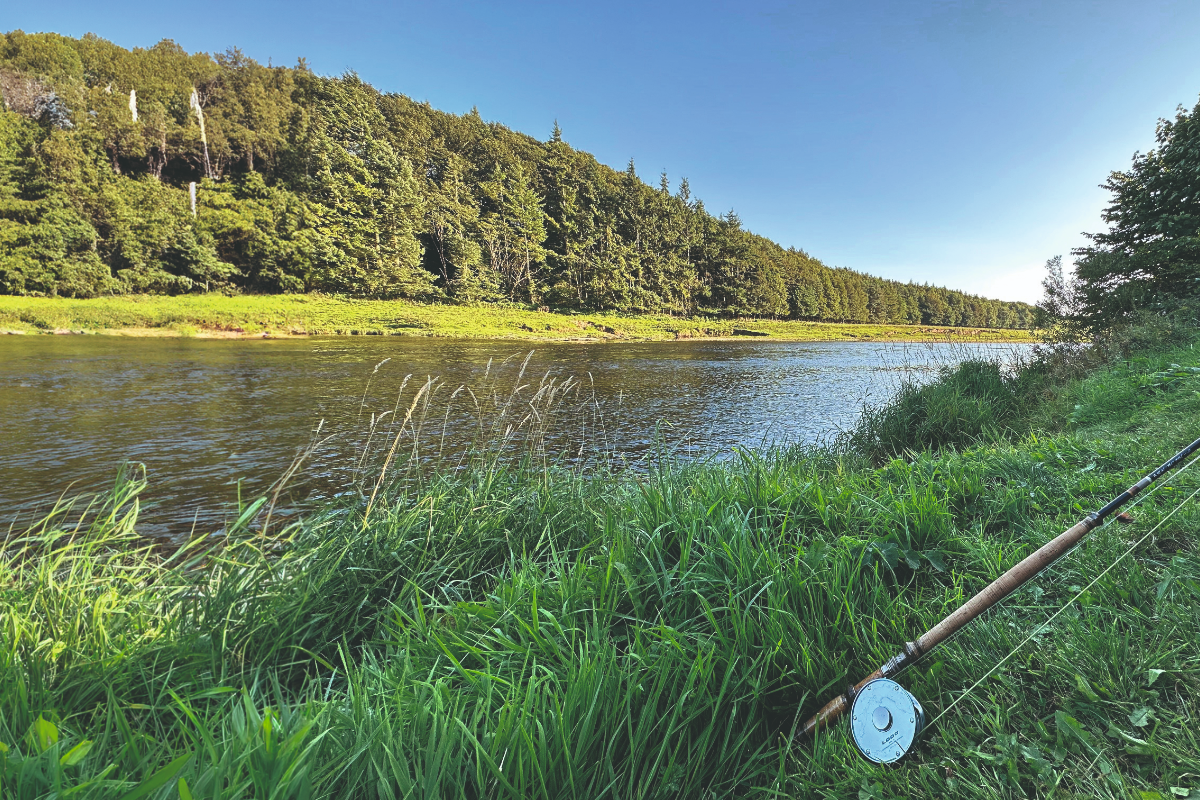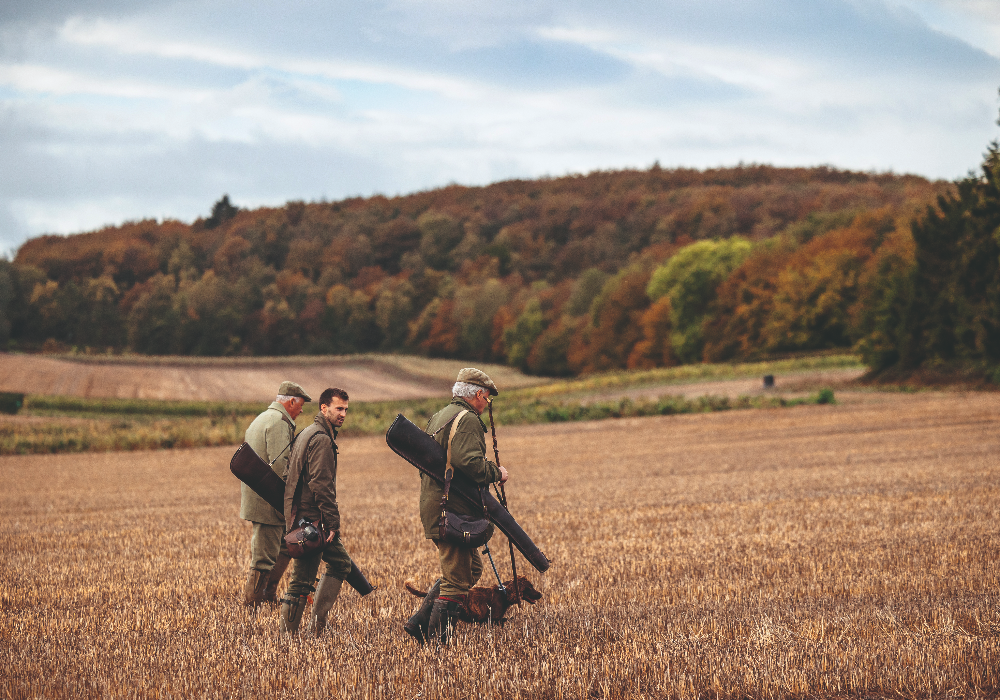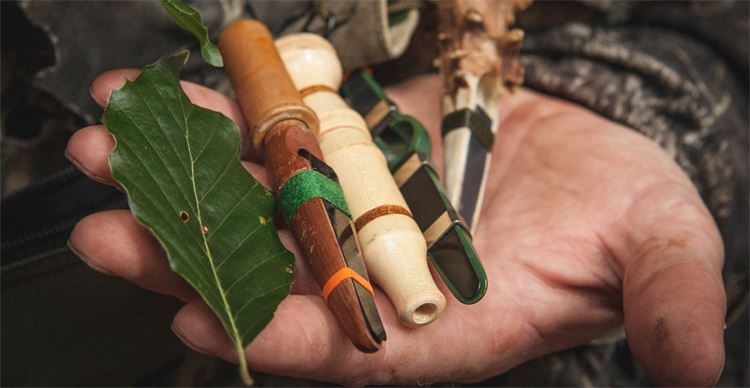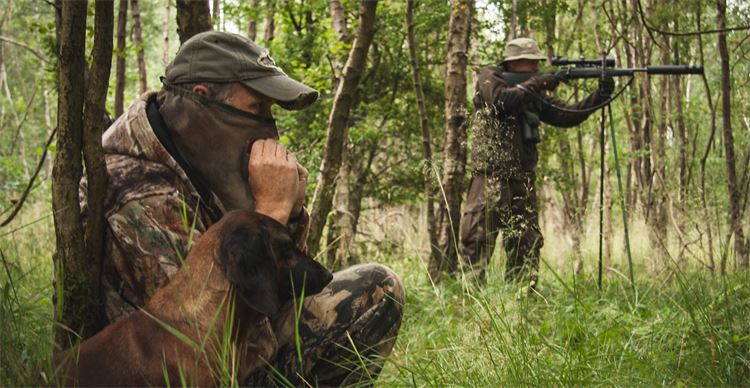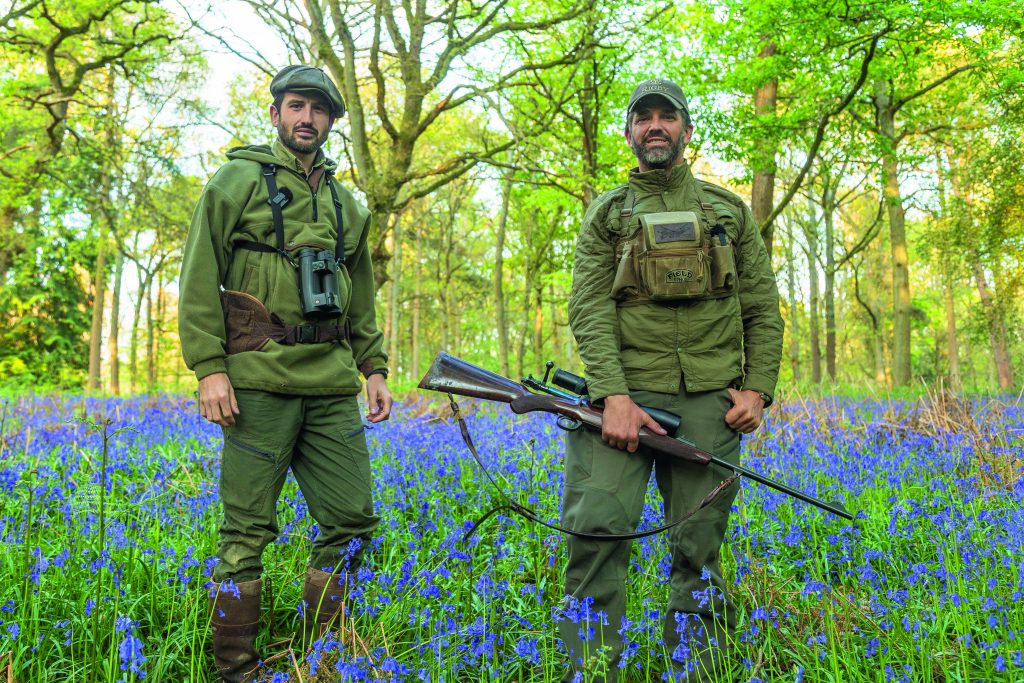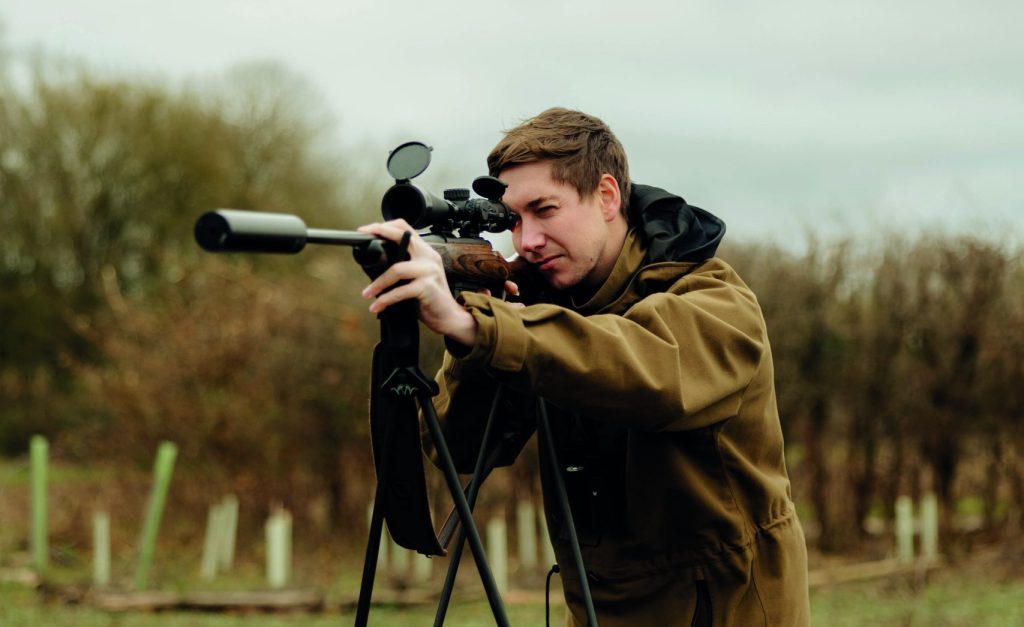The roe rut
Anthony ‘TRIGGER’ Alborough-Tregear looks into that special time of year for the roe stalker: the rut.
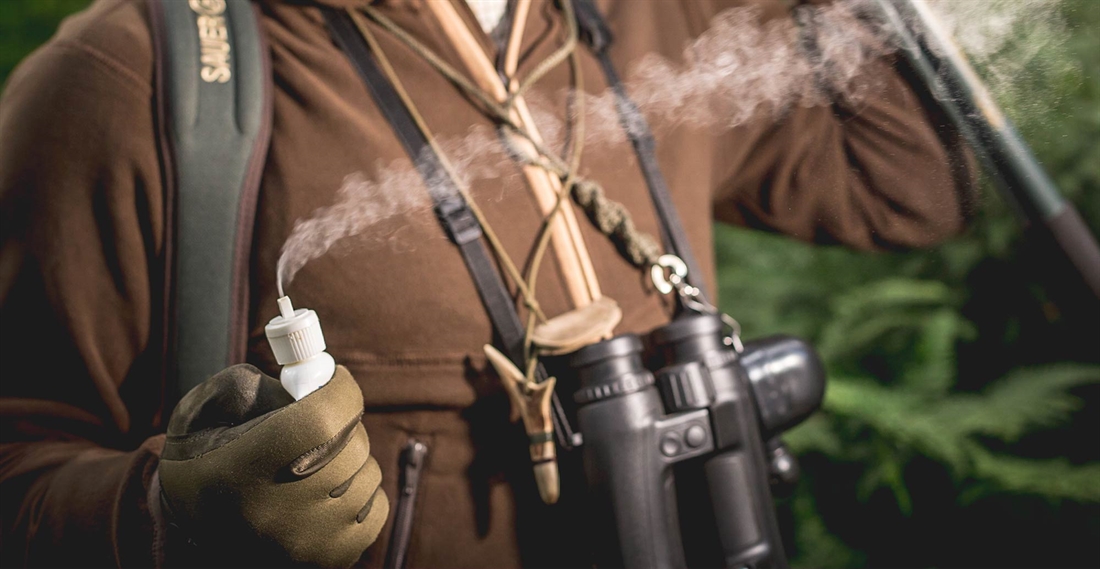
“The rut is on, the rut is on…THE RUT IS ON!” These are without doubt the most exciting words to hear in late summer – an otherwise quiet period for the roe stalker. With crops yet to be harvested and the woodland cover thick, little roe stalking will have taken place since the spring, but that is all about to change.
The build-up to the roe rut is always something to look forward to as it has the potential to bring either feast or famine, with the variables of the British summer weather having a real influence on its eventual outcome.
Many a year I have waited in anticipation as the temperature builds throughout the summer towards the much-needed thunderstorms lurking at the end of July, hopefully bringing with them the humidity that spurs the roe on to rut. As often as not the thunderstorms turn into days of heavy rain that cool the air temperature to such that the warm humidity relished by the roe turns into little more than a typically damp and miserable British summer! Wind, rain, barometric pressure, humidity and temperature all play a part.
Should the hunting gods be with us and the weather materialises into the sticky, humid, thundery chaos that we savour, then there is potential for an exciting, often dramatic rut.
Apart from the build-up, what really makes the roe rut so exciting? Unquestionably it is the animals themselves. Roe are a secretive deer that disperse with the coming of spring and the growth of cover. The roebucks become almost reclusive by the end of June with many older bucks having already vanished into some thicket, hidden away from the stalker’s probing eye. Shelter and food are most likely in abundance as he builds up his reserves for the battle ahead and the defence of a doe, which he will pursue to exhaustion.
At this time of year, the doe will be caring for her kid or kids in some quiet glade, gently passing the summer away and cunningly planning her entrapment of the local buck. It is her attention seeking that draws the greater majority of bucks into the sights of the stalker as she comes into season in late July/early August.
The location of the rut for a particular pair of roe is dictated by the doe. She chooses the area and will draw the buck in with both her scent and a series of calls. It is the calls of the doe, or those of her young (often situated nearby) that the stalker attempts to mimic to the best of their abilities in an effort to draw a prowling buck – or doe with attending buck – within shot of the rifle.
One of the great joys of the roe rut is the chance to experiment with a whole host of calls manufactured mostly on the Continent where the roe has been artfully pursued for decades. The Buttolo Blatter call must rank as one of the most commonly used amongst stalkers of Capreolus capreolus. As an aside it also proves deadly on muntjac. Squeezable, it is simple to use but this does not mean that it guarantees success! Each call needs to be mastered, and this can take considerable time and patience. Where one fails another might work, so it pays to be skilled. Video clips, DVDs and old-school recordings provide useful research, as does going out with an experienced stalker. Even with all the practice in the world, roe deer can still be fickle creatures and even though you know there is a lone buck in close proximity, he just may not choose to come to the call on a given day.
A word of advice here: if you wish to practise your roe calling techniques prior to the rut, it’s wise to do it far away from your ground, so as not to give the roe a prelude as to what to expect, good or bad.
For most stalkers the first visual sign of the rut having started is the chasing of a doe across a recently combined field in broad daylight. Under no other circumstances would roe be so foolishly out in the open, but with hormones raging the deer run around in carefree abandonment. If the doe chooses a woodland setting for her chosen rutting ground, then it is not uncommon to see what are referred to as ‘roe rings’ – often a figure of eight path where the buck has chased the doe round and round.
At this point, with the rut looking like it is underway, you need to consider where you are with your management plan and the bucks you have on the ground. By now you may well have taken out most of your yearlings and left some older cull bucks until this time. The antlers should be fully coloured, which makes for a beautiful trophy, even if there is the potential for a little damage from sparring and rubbing. This is also a time to re-consider bucks that you may not have seen before, particularly those that have filled voids created by the culling of bucks earlier in the season. You never know what might turn up, especially if your ground borders that where no stalking takes place.
The deer may rut any time of the day and so the necessity to be up early and out until dark is not always a requirement. Part of the great allure of stalking during the rut is that you can choose how you wish to stalk and how best to use your calls. Deer in the open can often be approached more freely as they are distracted by the vigour of the rut itself. Many a time I have been able to stalk a buck that has been totally absorbed by a doe who runs him round and round an open piece of ground. A call proves useful here in actually stopping the deer long enough to take a considered and fatal shot.
If you know where a buck might be without a doe, then you have the opportunity to try your calling in an attempt to draw him out into the open, or at the very least into a shootable position. Patience is the name of the game here as you cannot just call and expect a buck to come running, although that can sometimes be the case.
Once in West Sussex I was with a colleague who had just taken to using the Hubertus cherrywood roe call. This cunning little device has a screw which you can adjust to alter the tone and mimic either a doe or a kid. Sat down at the top of a natural bowl with our backs to a fenceline, we looked across to a small piece of thick coppice. My colleague began to make some subtle peeps and I readied myself on the long bipod, expecting to see nothing as at the time I was very new to all this. Minutes passed with short breaks between the calling, the humidity certainly apparent as the sweat rolled down my neck. Suddenly, from nowhere, a magnificent buck burst through the cover opposite us and ran into the centre of the bowl, looking intently in our direction. Taking me completely by surprise, I hastily took a shot and clean missed him! Lucky for me the potential draw of a beautiful doe was enough to make him hesitate and with my second shot I took one of the finest bucks I have to this day – a narrow, heavily-pearled bronze medal specimen with thick coronets.
In woodland, rutting roe can be a whole new and very exciting proposition. Last year we were almost run over by a doe and a buck that chased one another around within five yards of where we had stalked to. They appeared almost oblivious to us but the thick made a shot impossible. The experience was nevertheless rewarding and being in such close proximity to them was enjoyable.
The beauty of mixed ground stalking is that you can experience all sorts of scenarios which means that you are always learning.
By mid-August the rut has pretty much drawn to an end, yet young bucks – especially those displaced my mature bucks – can come quite easily to the call. It’s always worth spending some time calling in outlying areas where these youngsters may be seeking refuge in the hope of finding some late female company.
Post rut is also a good opportunity to search around your ground for any injured bucks that may need dealing with – not everybody emerges from this most spectacular of natural phenomenas unscathed.
Related Articles
Get the latest news delivered direct to your door
Subscribe to Fieldsports Journal
Elevate your experience in the field with a subscription to Fieldsports Journal, the premium publication for passionate country sports enthusiasts. This bi-monthly journal delivers unparalleled coverage of game shooting, fishing and big game across the UK and beyond.
Each issue offers a stunning collection of in-depth features, expert opinions and world-class photography, all presented in a timeless yet contemporary design.
Save 10% on shop price when you subscribe, with a choice of packages that work for you. Choose from Print & Digital or Digital only with each journal delivered directly to your door or via the app every other month, plus access to past issues with the digital back issue library.



